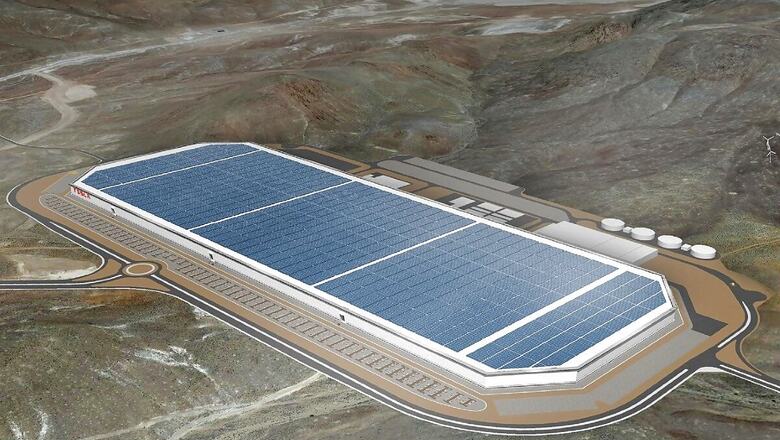
views
At the recently concluded 44th RIL AGM, Mukesh Ambani, chairman and managing director of Reliance Industries, announced that the company will make a major push for new and renewable sources of energy. As part of his move, Ambani stated that Reliance Industries now plans to build four “gigafactories”, which will be intended to “manufacture and integrate all critical components of new energy ecosystem.” The RIL CMD committed a sum of Rs 60,000 crore to invest in setting up of four gigafactories – one for solar photovoltaic cells, one for advanced energy storage batteries, one for electrolysers and one for fuel cells. Interestingly, RIL’s plan to set up four gigafactories in India may not just create jobs and poise India as one of the biggest players in the global clean energy space, but from a sheer technological standpoint, may well create a record in establishing four gigafactories.
What are gigafactories?
While gigafactories aren’t a legacy phrase associated with mainstream industries, it has become a mainstay of modern and new generation clean energy companies. The term was first mentioned by mercurial Tesla and SpaceX chief, Elon Musk, some time in 2013 – in association with the massive battery production facility that Tesla, his electric car company, was building. While there isn’t an exact dictionary definition of what a gigafactory is, there are two common understandings of the term – one states that a gigafactory signifies a factory that is capable of end to end production of thousands of gigawatts of energy, via end to end battery manufacturing process. The other interpretation of the term is that a gigafactory generally points to a massive factory – with ‘giga’ denoting the sheer scale of the enterprise.
Whichever definition is considered, a gigafactory is, by all means, a factory of epic proportions. It involves an end to end process of building commercially usable energy cells and batteries from start to finish – right from sourcing raw materials, to having all the requisite instruments and material within one place, to churning out the finished cells and batteries. A gigafactory essentially brings together multiple companies and entities that source components, bring together highly specialised instruments, and numerous business processes that are tied together to make such a factory work.
It is this that requires a gigafactory to be absolutely massive in terms of size, since it incorporates so many different elements together. However, it also makes the process of battery manufacturing more economical, since it does not require the heavy cost that may be incurred in moving volatile energy processes from one place to another. Gigafactories also deploy cutting edge technologies, and create thousands of jobs in order to execute the entire process.
This also falls in line with Ambani’s statement, who said, “We will invest an additional Rs 15,000 crores in the value chain, partnerships and future technologies, including upstream and downstream industries. Thus, our overall investment in the new energy business will be Rs 75,000 crores in 3 years.”
How big are four gigafactories?
While gigafactories are mammoth contraptions by themselves, having four of them is unprecedented. For reference, the Tesla gigafactory in Nevada, USA that was about 30 percent finished in February 2020 was spread across 43 acres of land, with floor space that measured 121 acres. That is the equivalent of more than 93 full-sized football stadiums, taken together. A fully completed and full-size gigafactory could measure well more than that.
While there is no particular scale, four full-size and fully operational gigafactories will be nothing short of an engineering marvel. For reference, the present record holder for the world’s largest building by floor space is the New Century Global Centre in Chengdu, China, with over 433 acres of floor area. Four fully completed gigafactories, as per present knowledge, would be well above that.
It is this that raises excitement around Reliance Industries’ plan to build four gigafactories to contribute to India’s quest to shift to clean energy resources, and it will be interesting to see what the future holds.
Read all the Latest News, Breaking News and Coronavirus News here.
















Comments
0 comment